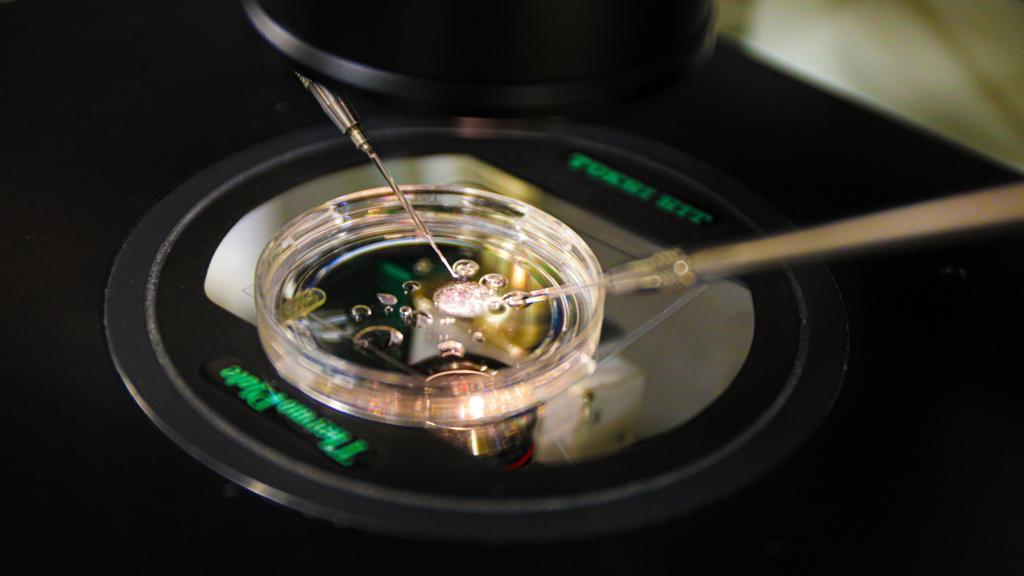“`html
In a groundbreaking development, researchers in the United States have successfully created early-stage human embryos by manipulating DNA sourced from adult skin cells, subsequently fertilizing it with sperm.
This novel technique presents the potential to circumvent infertility stemming from age or disease, effectively utilizing nearly any cell within the body as a foundational element for initiating life.
Furthermore, the advancement could pave the way for same-sex couples to conceive children genetically related to both partners.
It is important to note, however, that significant refinement is required – potentially spanning a decade – before fertility clinics could even contemplate its implementation.
Experts have lauded the breakthrough as remarkable, emphasizing the need for open public discourse regarding the evolving possibilities in reproductive science.
Historically, reproduction has been understood as the straightforward union of sperm and egg, culminating in embryo formation and subsequent birth.
Now, scientific advancements are challenging these fundamental tenets, as exemplified by the present experiment initiated with human skin cells.
The methodology employed by the Oregon Health and Science University research team involves extracting the nucleus, which houses the complete genetic blueprint, from a skin cell.
This nucleus is then transplanted into a donor egg that has been emptied of its own genetic material.
Up to this juncture, the technique mirrors that used in the creation of Dolly the Sheep, the pioneering cloned mammal born in 1996.
However, the modified egg is not immediately receptive to fertilization due to the presence of a full complement of chromosomes.
Humans inherit 23 chromosomes from each parent, totaling 46, an amount already present in the modified egg.
Therefore, the ensuing step necessitates inducing the egg to discard half of its chromosomes, a process the researchers have termed “mitomeiosis,” a portmanteau of mitosis and meiosis, the two primary modes of cell division.
The study, published in the journal Nature Communications, details the creation of 82 functional eggs, which were subsequently fertilized with sperm. Some of these progressed to the early stages of embryonic development, though none were allowed to develop beyond six days.
“We achieved something that was thought to be impossible,” stated Prof. Shoukhrat Mitalipov, director of the Oregon Health and Science University’s center for embryonic cell and gene therapy.
The technique remains imperfect, as the egg randomly selects which chromosomes to eliminate. Ideally, it should retain one of each of the 23 types to avert disease, but instead, it often ends up with duplicates of some and omissions of others.
Moreover, the success rate is low (approximately 9%), and the chromosomes lack a crucial process of DNA rearrangement known as crossing over.
Prof. Mitalipov, a renowned pioneer in the field, commented: “We have to perfect it.”
“Eventually, I think that’s where the future will go because there are more and more patients that cannot have children.”
This technology aligns with the burgeoning field of in vitro gametogenesis, aimed at producing sperm and eggs outside the body.
While still in the realm of scientific discovery rather than clinical application, the ultimate goal is to assist couples who cannot benefit from traditional in vitro fertilization (IVF) due to a lack of viable sperm or eggs.
This could benefit older women with non-viable eggs, men with insufficient sperm production, or individuals rendered infertile by cancer treatment.
Furthermore, this field redefines the concept of parenthood. The technique described here can utilize skin cells from either a man or a woman.
This opens up the possibility for same-sex couples to have children genetically related to both partners. For instance, in a male same-sex couple, one partner’s skin could be used to generate the egg, while the other partner’s sperm could be used for fertilization.
“In addition to offering hope for millions of people with infertility due to lack of eggs or sperm, this method would allow for the possibility of same-sex couples to have a child genetically related to both partners,” noted Prof. Paula Amato, from Oregon Health and Science University.
Roger Sturmey, a professor of reproductive medicine at the University of Hull, characterized the science as “important” and “impressive.”
He added: “At the same time, such research reinforces the importance of continued open dialogue with the public about new advances in reproductive research.
“Breakthroughs such as this impress upon us the need for robust governance, to ensure accountability and build public trust.”
Prof. Richard Anderson, deputy director of the MRC Centre for reproductive health at the University of Edinburgh, stated that the ability to generate new eggs “would be a major advance.”
He acknowledged that “there will be very important safety concerns but this study is a step towards helping many women have their own genetic children.”
Move comes despite opposition from union, with ministers saying NHS needs to embrace digital tech.
Patient groups believe traditional booking methods should be kept for those with limited access.
It follows criticism that the body which determines whether doctors are fit to practise in the UK was being too lenient.
Dean Burton is taking part in a cancer trial to make sure any symptoms are caught early.
More than 2,000 people with flu in Wales needed hospital care last winter, says Public Health Wales.
“`

